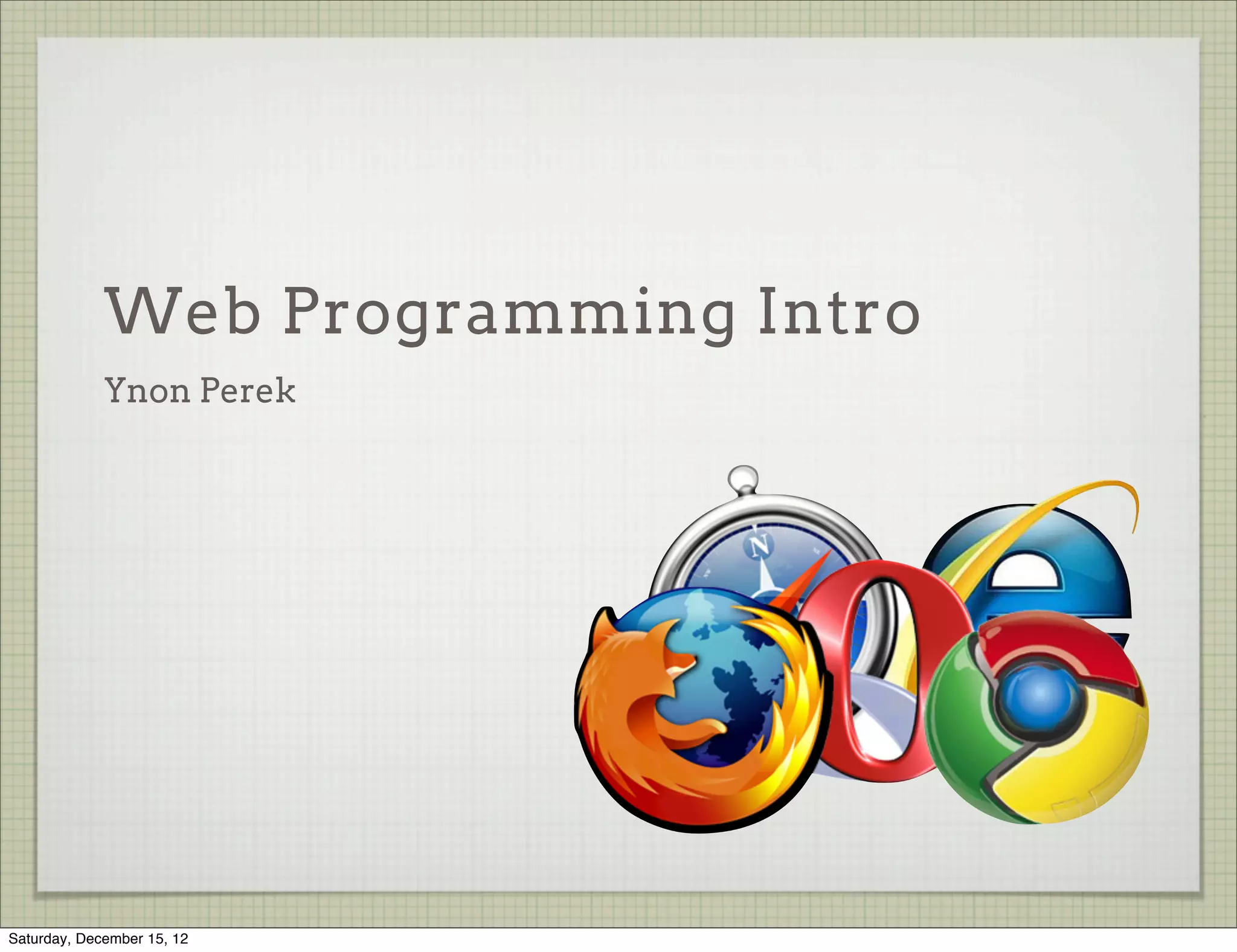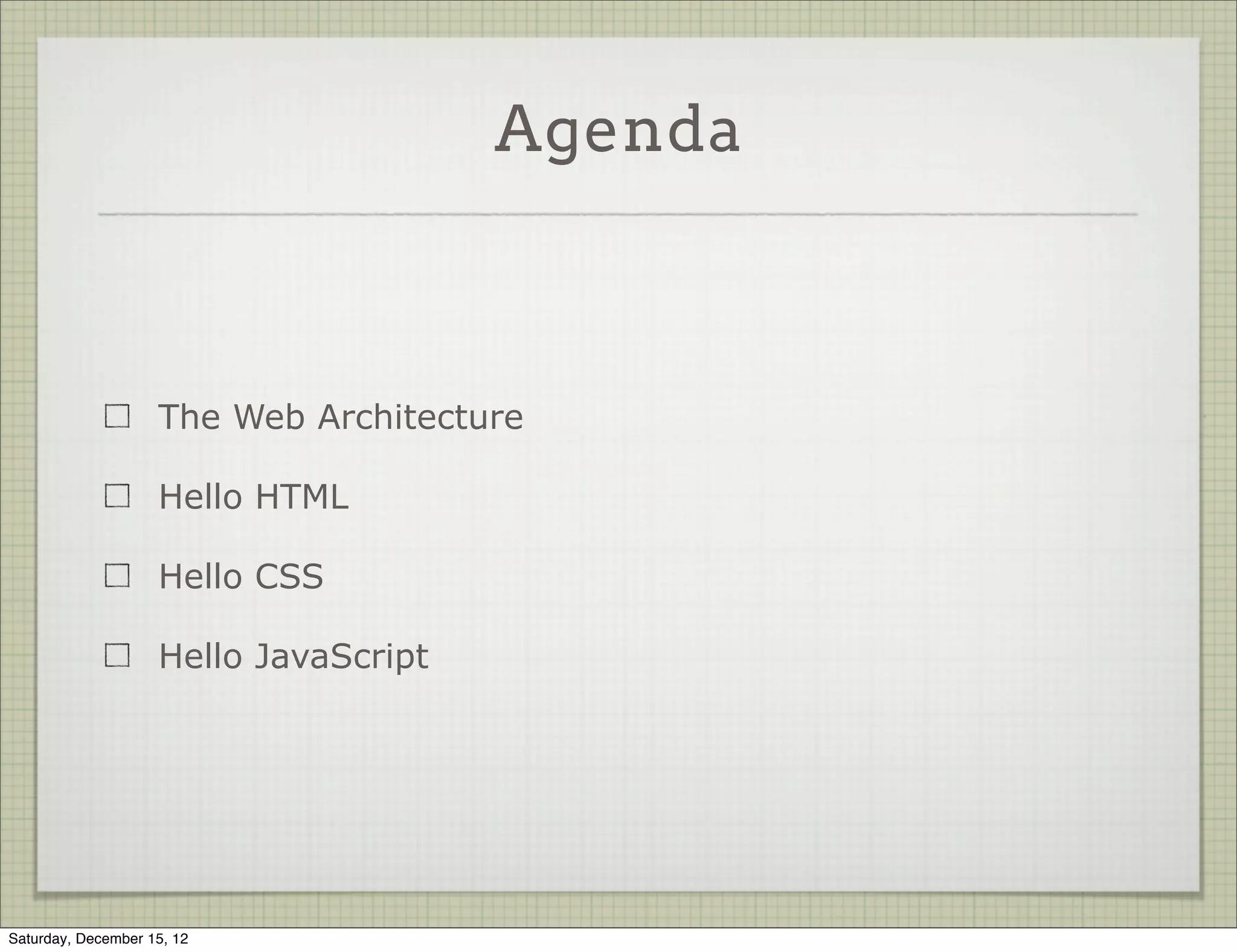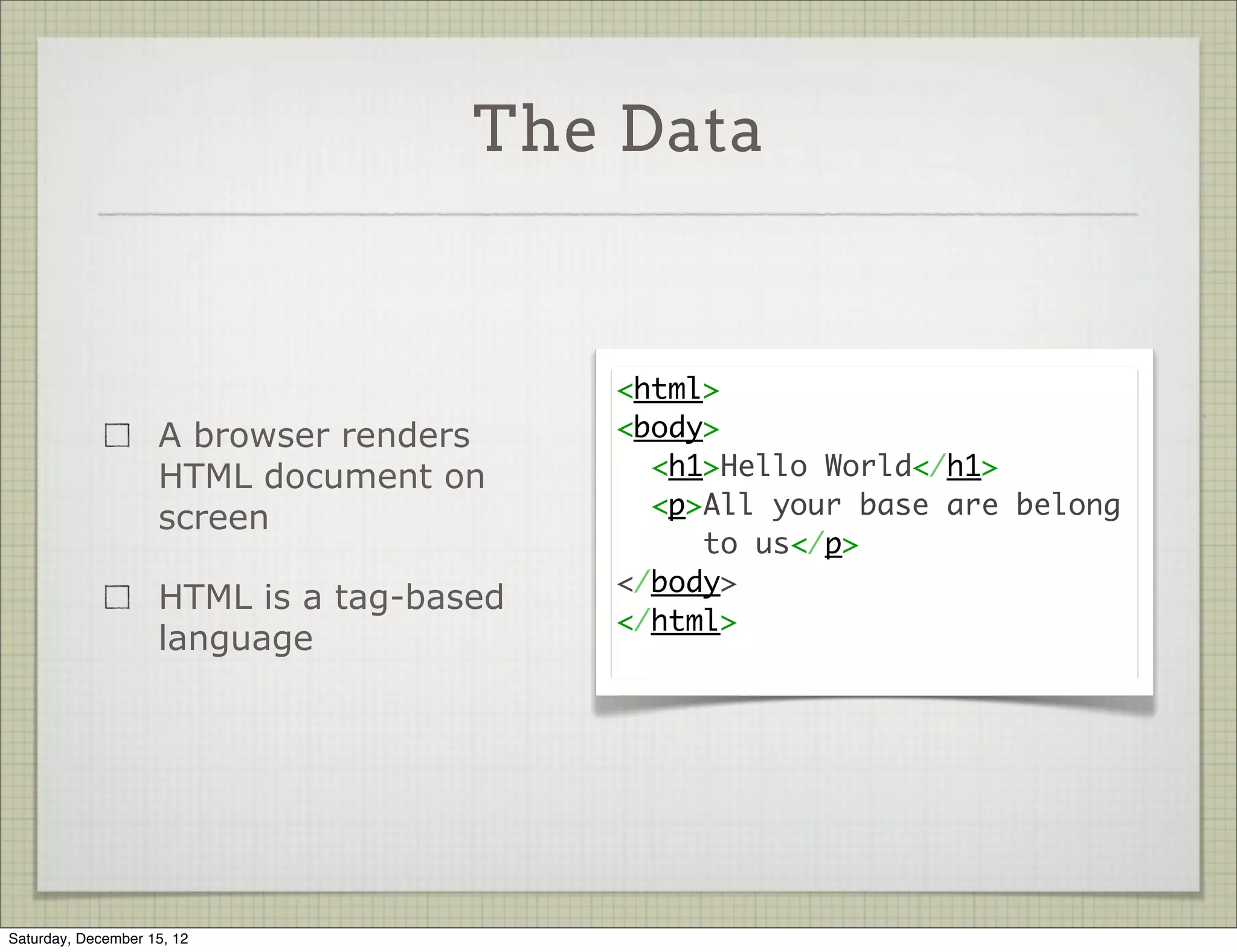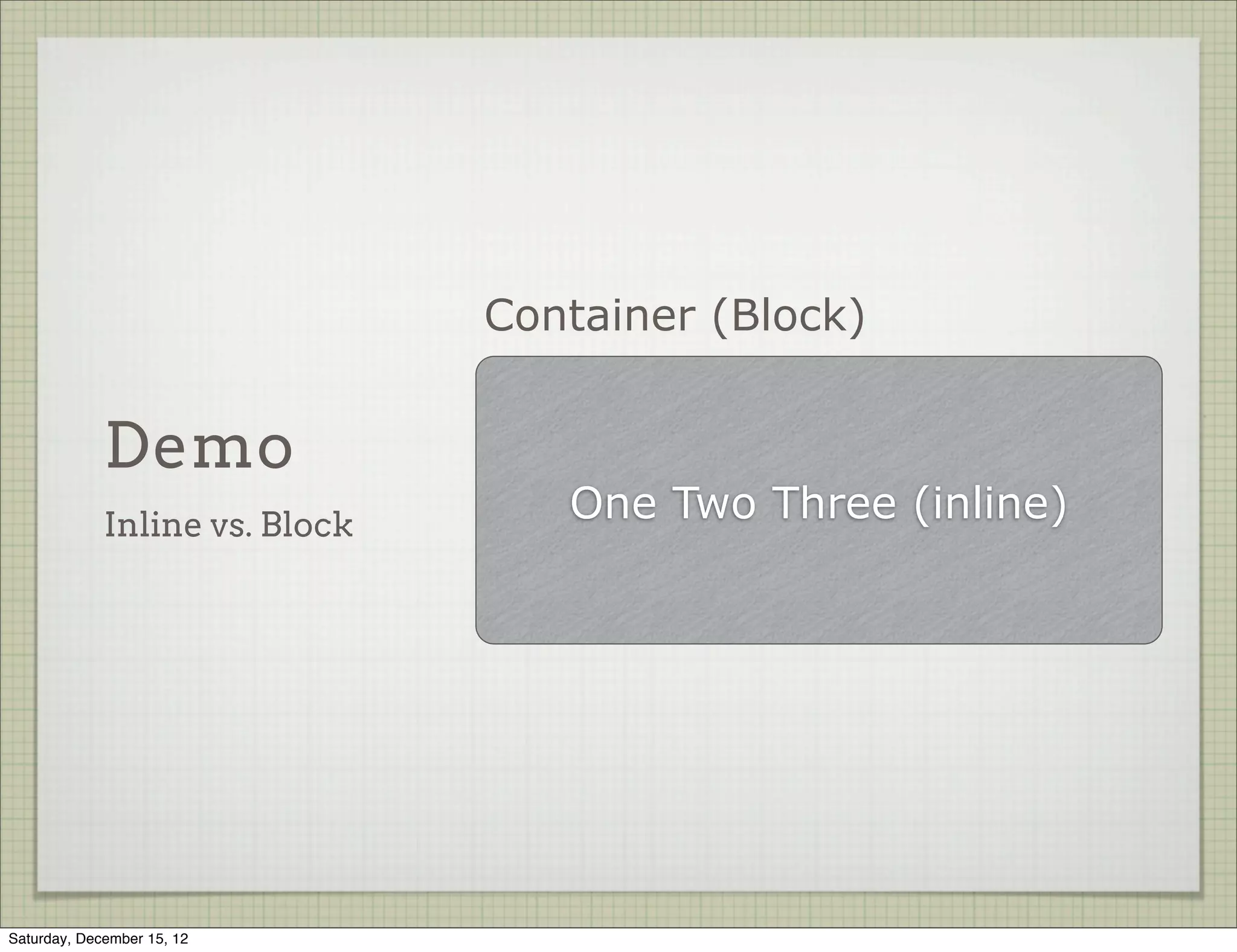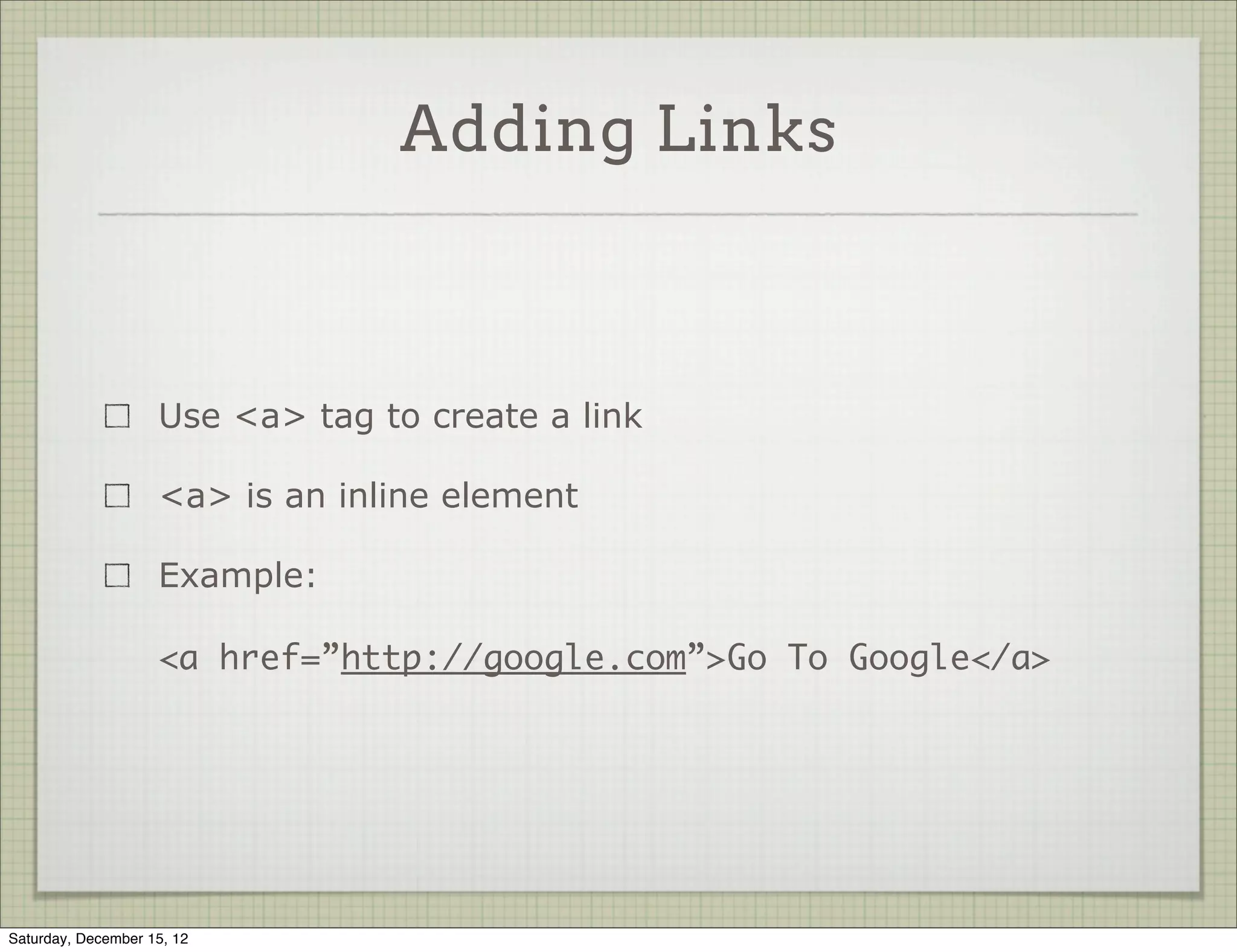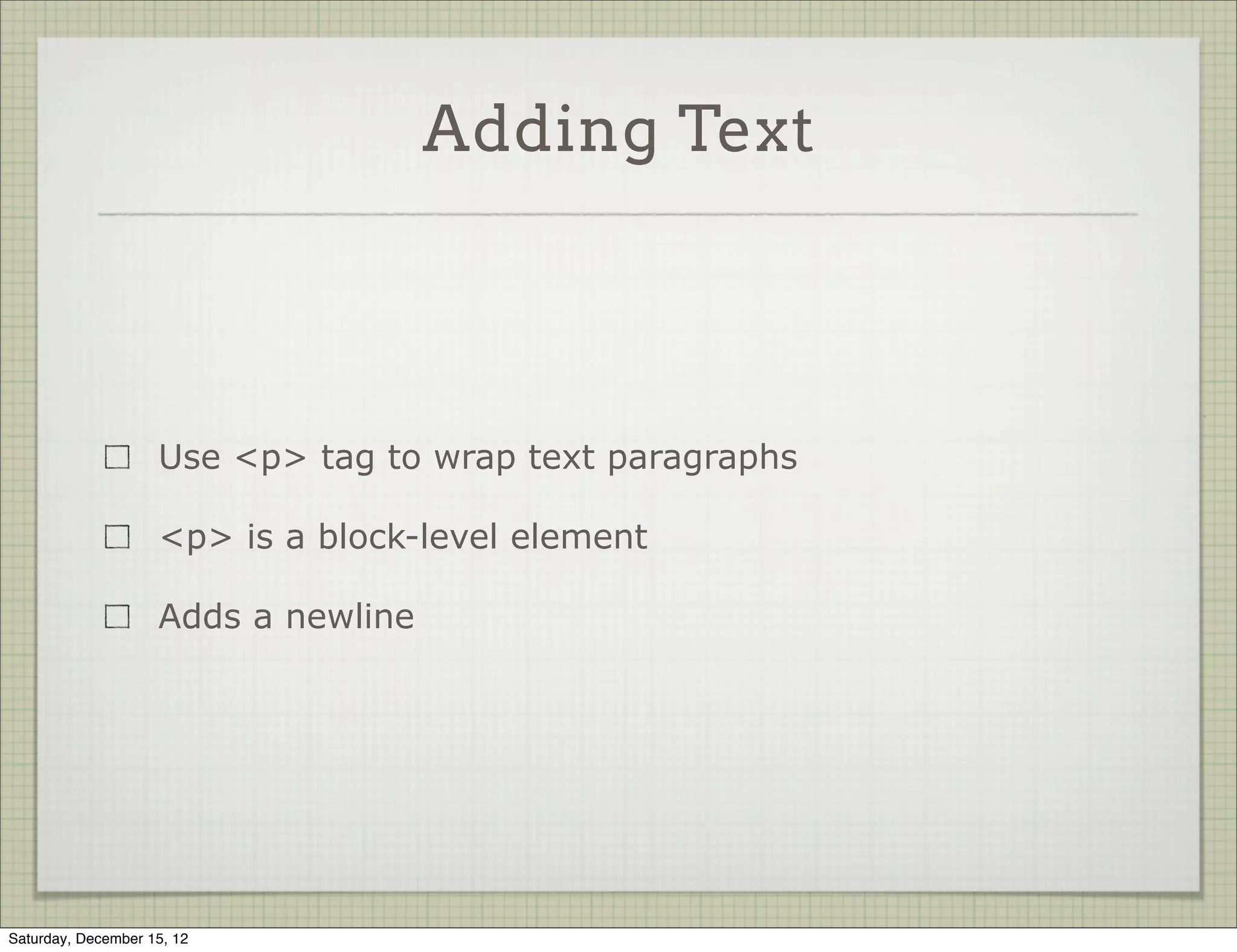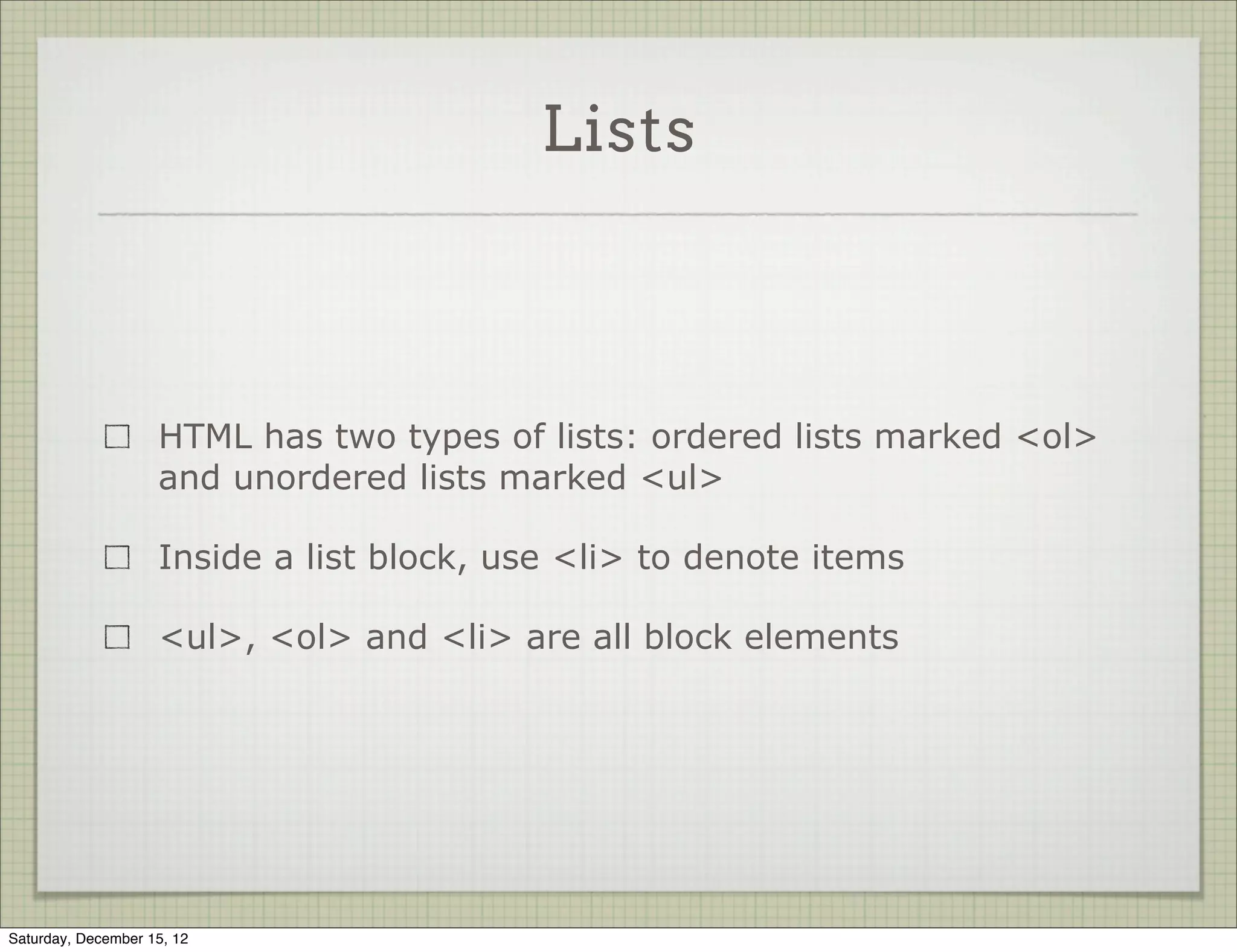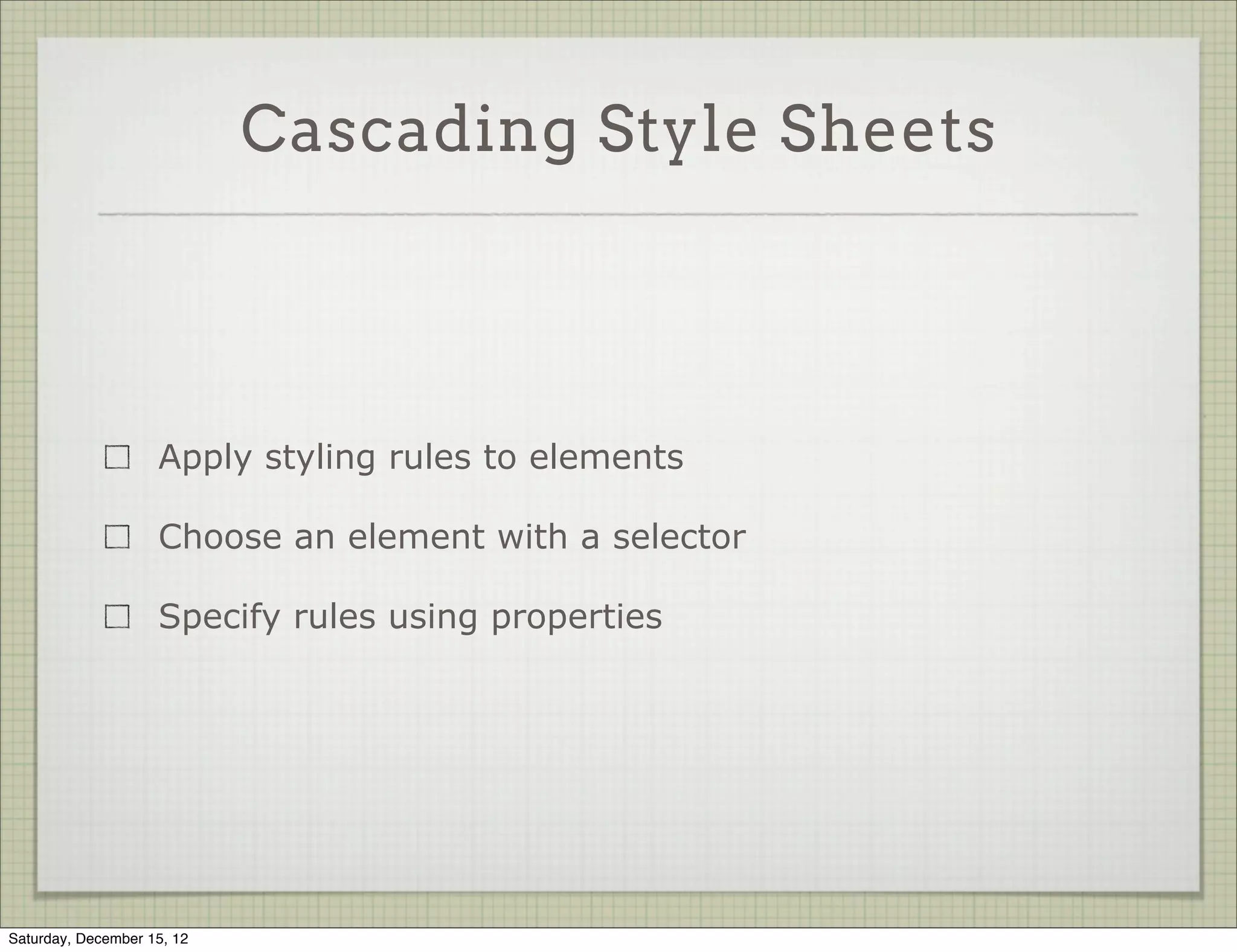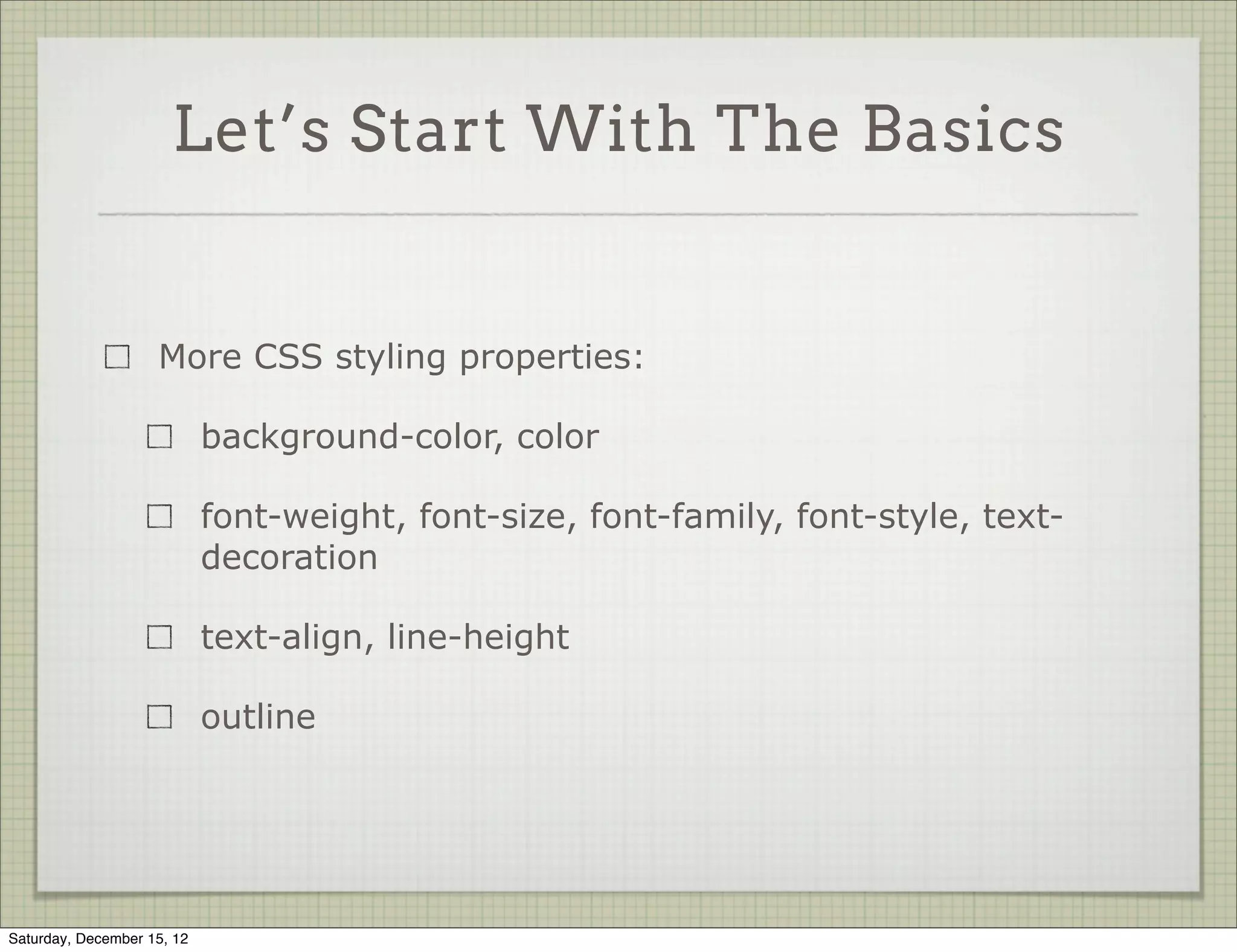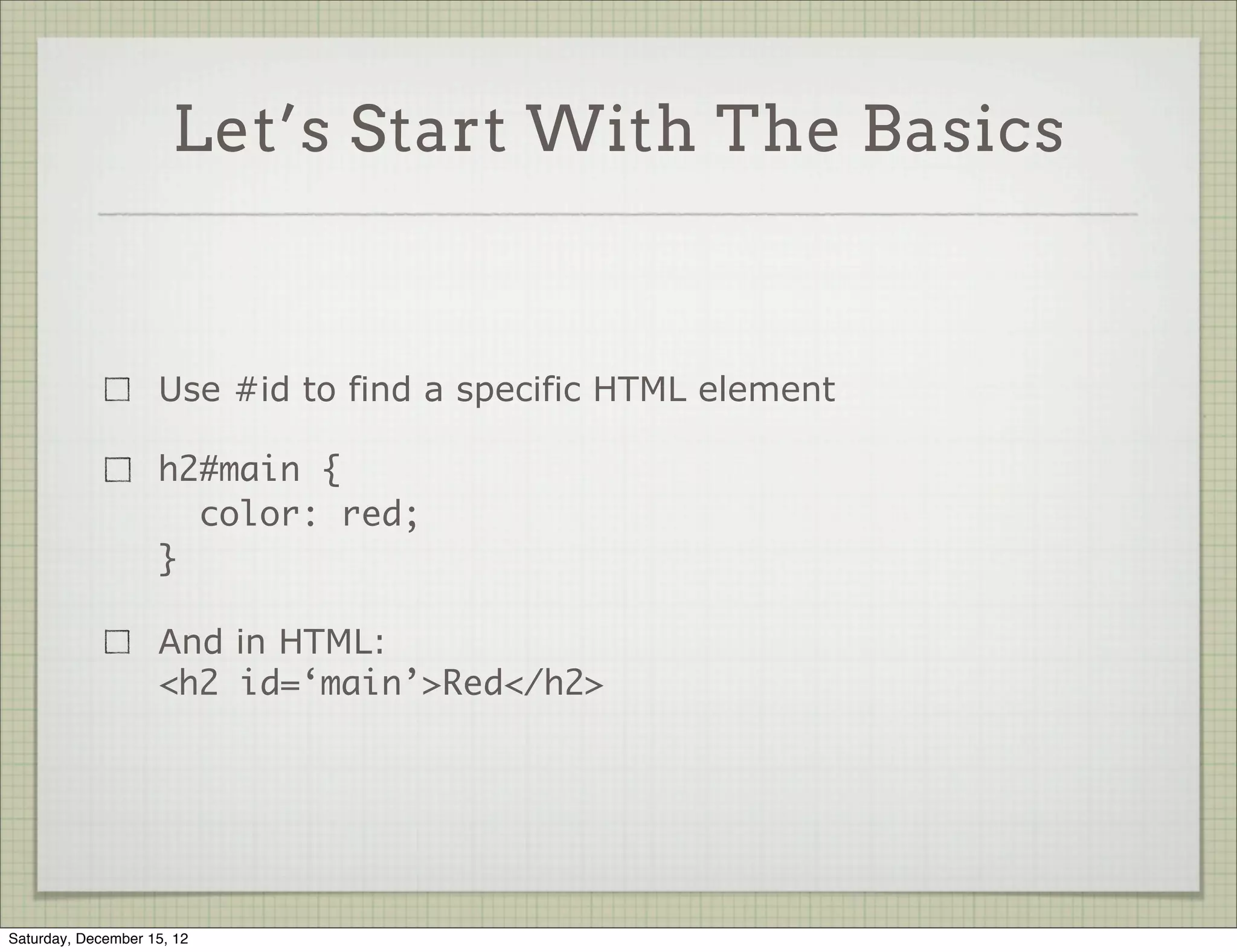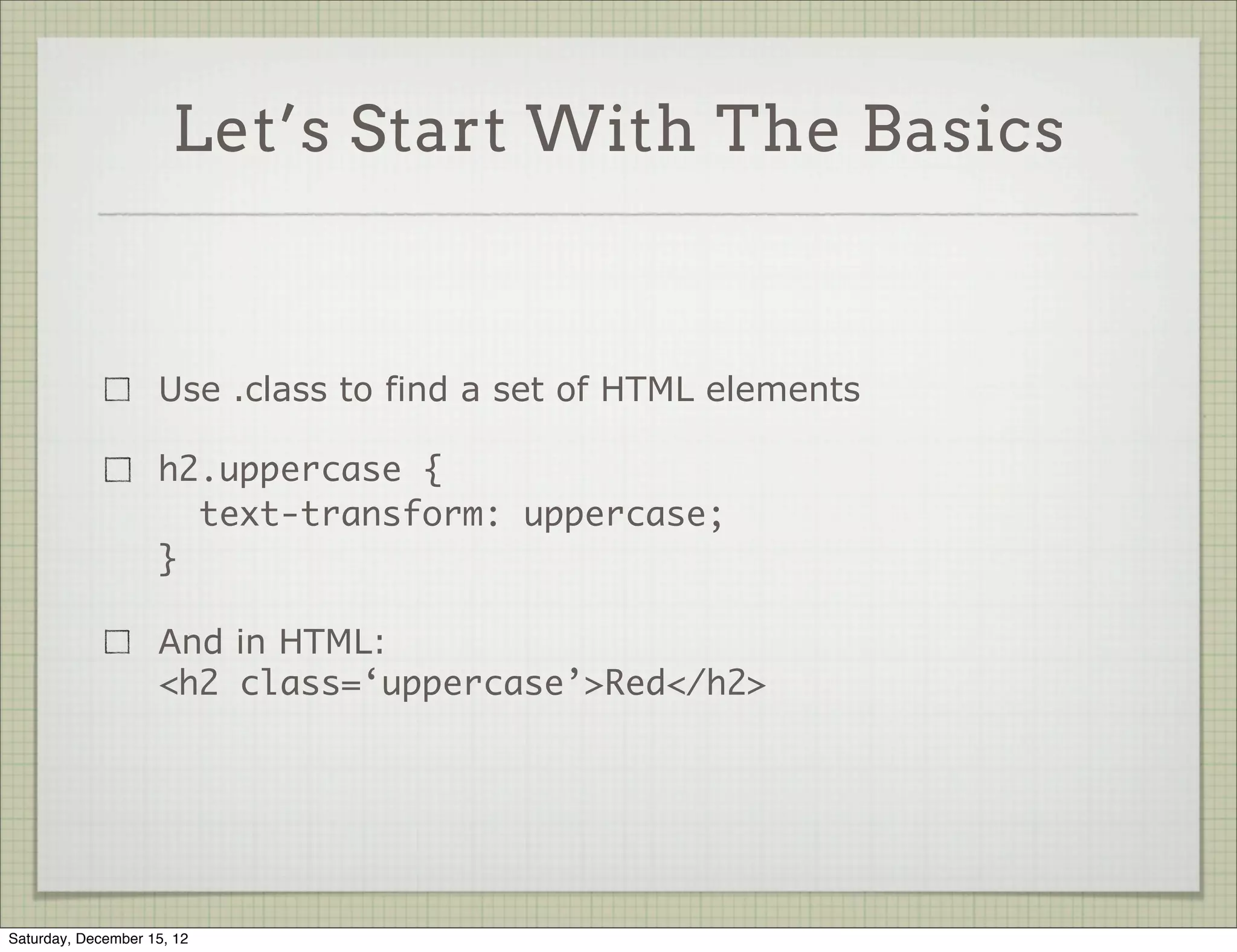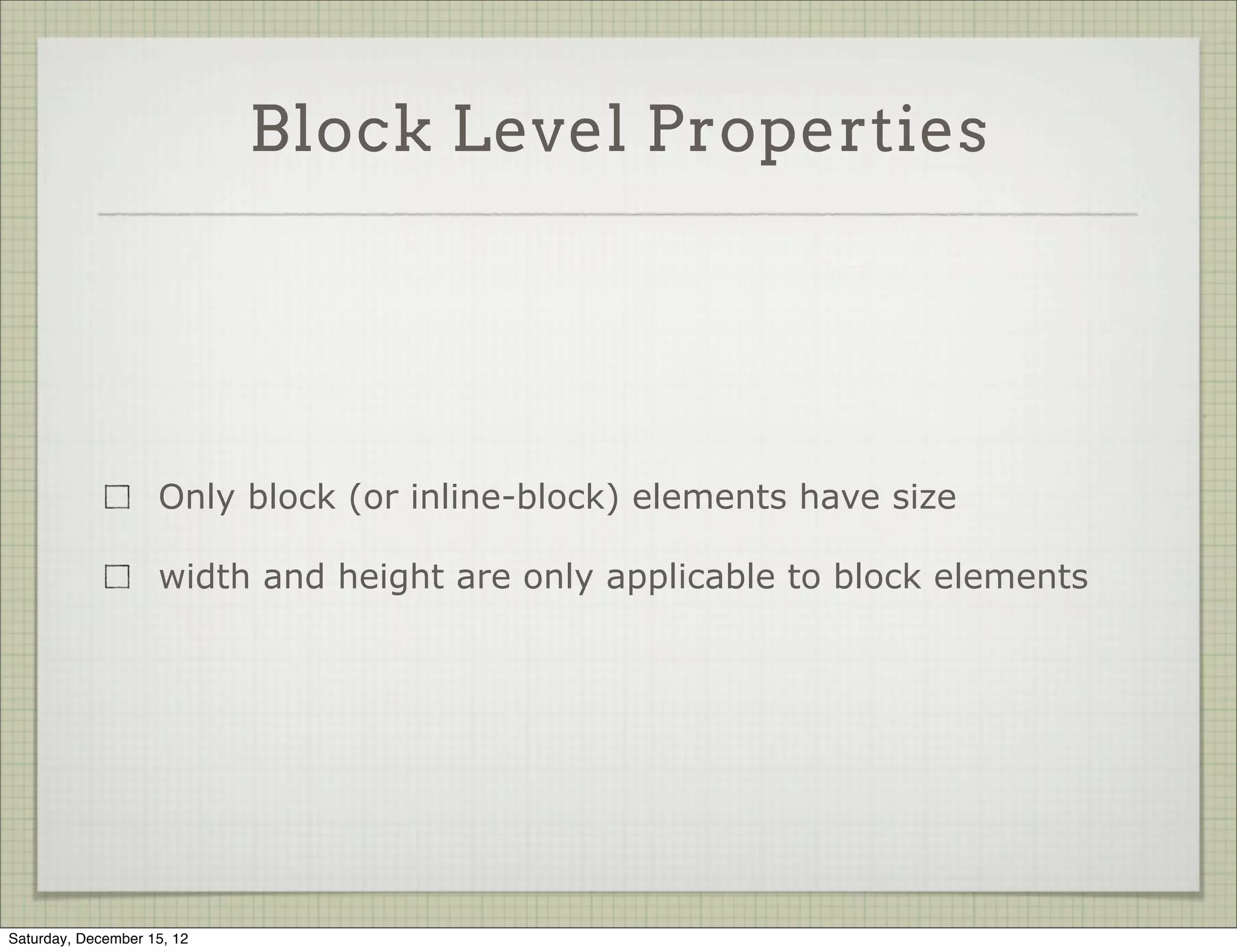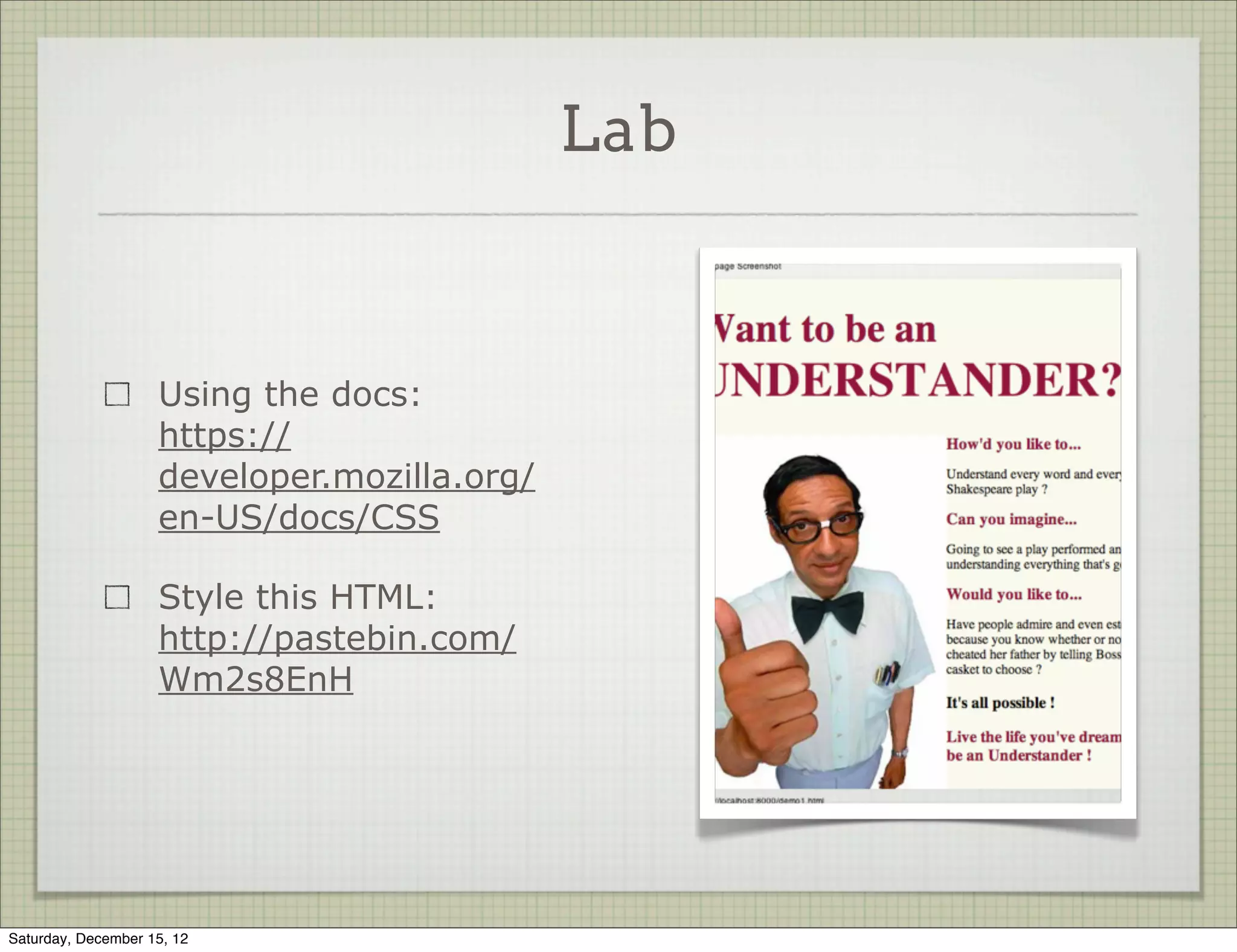This document provides an overview and agenda for an introductory web programming course. It discusses the basic web architecture involving client-side and server-side communication. It also introduces some key HTML tags for adding common elements like text, links, images and lists. Finally, it gives an introduction to CSS for applying styles to HTML elements through selectors, properties and other concepts. The goal is to lay the foundation for building web pages with basic HTML and CSS.
